“Hachioji” the town of Mt. Takao
The city of Hachioji, the basetown of Mt. Takao still have various historical sites in the city including Takiyama castle and Hachioji castle and many events including the largest festival in Tama area called “Hachioji Matsuri Festival” are held throughout the year. Attractions of Hachioji to everyone. There are recommended places to visit, seasonal events and historical and cultural sites.
See
-
Takao-komagino-teien

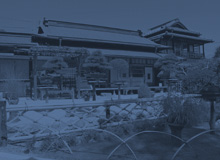
Take in a scenic overlook of valuable building and a traditional Japanese landscape garden:
You can enjoy comfortable and authentic Japanese landscape garden, which has many sights to see―many lions such as 'Karesansui', traditional Chinese or Japanese dry landscape garden, a garden next to a (ceremonial) teahouse, a varicolored or golden carp, 'Bonsai' (dwarfed tree in a pot), and seasonal various flowers. Inside of the building is open for free visiting, taking a rest, spend a relaxed and heartwarming time.
Contact:
Phone: 042-663-3611
Open: 9:00-17:30 (in September and October, it'll be till 16:30、in November to March, it'll be till 15:30)
Close: no holidays
Fee: for free
Place: 268-1 Uratakaomachi, Hachioji, Tokyo, 193-0841
How to get there: 15 minutes' walk from the Takao Station of JR/Leio Lines
Parking lots: 8 capacities
-
Kumano-jinjya Shrine

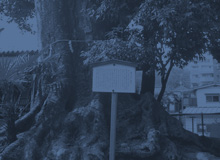
Sacred trees within the shrine precincts are called as 'Tree of matchmaking':
An oak-tree and a Japanese zelkova (species of elm-like tree, Zelkowa serrata) have grown from one root within the precincts. Therefore, this tree is called 'Tree of matchmaking.' It is said that those who put a small stone on the tree root with his/her name and his/her beloved one's name could accomplish his/her wishes.
Open: open for free sightseeing
Place: 1105 Higashiasakacho, Hachioji City, Tokyo
How to get there: 7 minutes' walk from the Takao Station from JR and Keio Line
Parking lots: none -
Trick Art Museum at Mt. Takao:


Experience strange Trick Arts!
You can have a fan time watching Trick Arts which are painted using optical illusion trick, such as 'Flying in the sky' or 'Walking through log bridge.' Taking pictures promotes how deep you can enjoy so that don't forget to bring your cameras.
Contact:
Phone: 042-667-1081
Open: 10:00 - 19:00 (from December till March, - 18:00)
(last entrance admission is 45 minutes before closing)
Close: No scheduled holidays
Admission Fee: 1550 yen for Adult, 1150 yen for Junior and High school students, 800 yen for elementary school, 600 yen for those who are under 4 years old and preschoolers, free for those who are under 3 years old (as of May 2025)
Place: 1786 Takao-cho, Hachioji City, Tokyo
How to get there: Right there from the Takaosanguchi Station of Keio Line
Parking lots: none -
Forestry and Forest Products Research Institute:
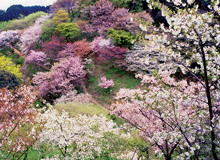
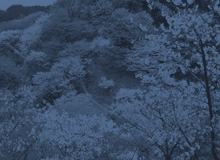
Let's have a walk celebrating cherry blossoms in spring:
They have been studying 600 kinds of 6000 cherry trees planted within the spacy areas of 7ha. These cherry trees are both domestic and abroad. As 250 kinds of 1500 cherry blossoms are to bloom one after another from the late February till the early May, you can enjoy watching cherry blossoms.
Contact:
Phone:: 042-661-0200
Open: 9:30 - 15:30
Close: on Mondays (In Marchi 1 ~ May 5, Monday is also open.)
Admission Fee: Adult-200 yen, Child-0 yen (In April, it cost 300 yen for Adult and 100 yen for Child)
Place: 1833-81 Todorimachi, Hachioji City, Tokyo
How to get there: 10 minutes' walk from the Takao Station of JR/Keio Lines
Parking lots: none -
Kobotoke Sekisho


Let's have a fan time as being a traveller in Edo Era:
The starting of Kobotoke Sekisho had been established by Hōjō Ujiteru who construted Hachioujijou Castle (Hojyo Family clan was used to be a large force of Samurai which controlled almost all of southern region of Kanto area during Sengoku-jidai that is Warring States period of Japanese history, approx. 1467-1568 CE), which was said to be relocated later at the current place. Currently there still remains 'Tegata-ishi Stone Monument' that is the stone which is the ancient people put their 'Tegata' (written permission to pass through an area during the Edo Era).
Contact:
Phone: 042-643-3115 (Official Hachioji Turist Association )
Open: free for anytime
Place: 419 Uratakaomachi
How to get there: 5 minutes' drive on bus bounded to Kobotoke from the Takao Station of JR/Keio Lines, and then getting off at Komagino Bus stop. It'll be out there..
Parking lots: none -
Takao Baigo (Huge area has plum-grove all over in Takao area)
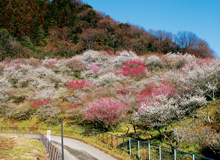
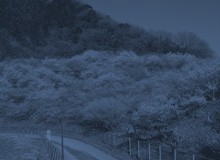
About 10 thousands of various colored plums are full of bloom. There are 10 thousand of them in total within the 5km's walking trail areas along Kyu Koushuukaidou (Former *Koshu-kaido Road) which contain Sekisho Bairin (plum-grove), Tenjin Bairin, Yunohana Bairin, Keoroshizawa Bairin, and Kobotoke Gawa River district. How about the trail walking while enjoying the spring tranquil village landscapes with red and white plum-grove at most against the mountain scenary? They are at full bloom from mid February till the end of March. 'Plum Festival' is held around March 10th every year and at each Bairin (previously described) are welcomed the festival booths by lots of visiters.
Contact:
Phone: 080-6758-1187
Place: Uratakaomachi
How to get there: 1. 15 minutes' drive on bus bounded to Kobotoke from the Takao Station of JR/Keio Lines, 2. Getting off at the Ohshimo Bus stop, then 3. 5 minutes' walk (KOGESAWA-Bairin: Bairin means a plum-grove)
Parking lots: none -
Musashi Imperial Graveyard:
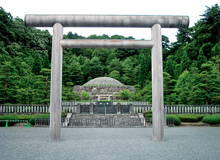
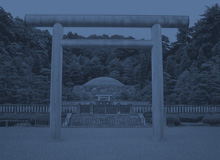
Walk through a front approach to Imperial Graveyard, surrounded with Japanese zelkova (species of elm-like tree, Zelkowa serrata) colonnade:
Upon the death of Emperor Taishou; Taishou Tenno (1879-1926 CE, reigning: 1912-1926 CE), it was decided that Imperial Graveyard should be constructed here, in Musashino district with deep wood. The Imperial mausoleum of Emperor Taisho: the Tama Mausoleum, The Misasagi (Imperial mausoleum) for the Empress Teimei was Tama no Higashi no Misasagi (Musashi Imperial mausoleum), The Imperial mausoleum of Emperor Showa: the Musashino Imperial Mausoleum、The Misasagi (Imperial mausoleum) for the Empress Kojun: the Musashino Higashi no Misasagi. Currently 4 of Misasagi rest in peace here. The Japanese zelkova (species of elm-like tree, Zelkowa serrata) colonnade a front approach to Imperial Graveyard is splendid to enjoy wathing. As Kitayama sugi, a Japanese cedar that grows in the northern area of Kyoto City, have been planted, the district within Imperial Graveyard and Misasagi has created a magnificent atmosphere throughout.
Minami Asakawa Bashi Bridge was built over as a front approach to Imperial Graveyard
Contact:
Open: 9:00- 16:00 (Entering 〜15:30)
Close: at the time official ceremony of the Imperial Family is held by Imperial Household Agency
Fee: For free
Place: 1833 Nagabusamachi, Hachioji City, Tokyo
Hot to het there: 15 minutes' walk from the Takao Station of JR/Keio Lines
Parking lots: 47 capacities -
Kamiyugi Kouen Park
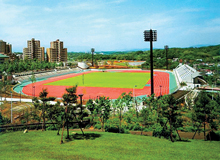

No other than here when you play sports!
This general park is characterized for its large space as wide as 21ha. Within this park, are there such facilities as baseball stadium, athletics stadium, tennis courts, and softball fields as well as playing fields for kids, lawn hills, a natural walking paths. You can enjoy the command of view of Mt. Fuji from the scenic overlook.
Contact:
Phone: 042-675-0227
Opening: anytime for free (charged in part)
Place: 2-19-1 Kamiyugi, Hachioji City, Tokyo
How to get there: 5 minutes' drive on bus bounded to the Keio Horinouchi Station from the Minami Osawa Station of Keio Line, and then get off at the Rikujo-Kyogijo-Mae stop (in front of athletics stadium) , it'll be right there
Parking lots: 256 capacities -
Nagaike Kouen Park
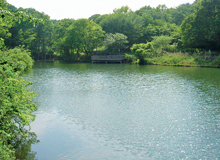
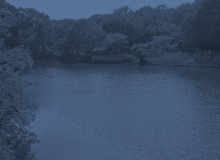
The park scenery gives you what you feel nostalgic!
The park has been preserving the forest of natural environment which holds marshy places and scrub brush with dogtooth violet (Erythronium japonicum) in bloom. Furthermore, rice fields, water mills, charcoal burner's lodges are preserved in this park, so that these scenery make you feel nostalgic through the nostalgic country side forest's landscapes. They hold events where you can feel and sense by touching the nature in this park.
Contact:
phone: 042-678-4616(Naganuma Park Natural Center)
Opening: anytime for free
Place: 2-58 Bessyo, Hachioji City, Tokyo
How to get there: 15 minutes' drive on bus bounded to the Keio Horinouchi Station from the Minami Osawa Station of Keio Line, and then get off at the Nagaike-shogakkou stop (Nagaike Elementary School) , it'll be right there.
Parking lots: 87 capacities
-
Fujimidai Kouen Park (You can see Mt. Fuji when it’s clear sunny day according to the name):


Taking your time for pleasant picnic
As the park is so large with the lawn picnic space, you can feel deeply open and so relaxed. So-called 'Sori-subeshi' at the slope (playing by sliding down slope) are very popular among children and you'll see them playing. In spring, this park is so famous for its beautiful cherry blossoms that many visitors come to enjoy the blossoms.
Contact:
phone: 042-670-9073
Opening: anytime for free
Place: 905-3 Shimo-Yugi, Hachioji City, Tokyo
How to get there:5 minutes' drive on bus bounded to the Keio Horinouchi Station from the Minami Osawa Station of Keio Line, and then get off at the Fujimibashi Eki stop (Bridge), it'll be right there. -
Katakurajoseki Kouen (Park of the Katakurajo Castle ruins)

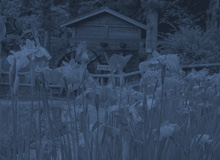
The ruins in the Middle age serves as a place where people can relax.
Katakurajo Castle is said to have been constructed in the Muromachi Era (1336–1573), however, now that it has been developed to be a public park for free use, there are the water mill and carvings/sculptures here and there in the park. Also, alike the others, Sumiyoshi Jinzya Shrine appealed to the same Sumiyoshi Jinzya in the Settsunokuni (Settsu: former province covering parts of modern Osaka and Hyogo).
Contact:
phone: 042-649-8900
Opening: anytime for free
Place: 2475 Katakuracho, Hachioji City, Tokyo
Hot to get there: 5 minutes' walk from the Katakura Station of JR
Parking lots: 22 capacities -
Kitano Tenmangu Shrine:


The area name 'Kitano' was names after this 'Kitano Tenmangu Shrine,' which enshrines Sugawara no Michizane (845-903) who was an aristocrat of 9th century of Japan and Udaijin (Minister of the Right) but got involved into the incident of overthrowing, sent to Kyushu district for a crime he did not commit, and passed away in his greatest sorrow. He was the best and brightest man in knowledge during his life, therefore, still now people pray for his good luck charm in entrance exam related to various occasions.
'he Yokoyama Party, one of the Musashi-shichito Parties (seven parties of samurai in Musashi Province around Hachioji region) appealed (Kanjo in Japanese) Kitano Tenmangu Shrine to this area. This is how the name 'Kitano' came from. Within the precincts of a shrine, we can see site of a Kitano the Stone Age settlement, which is the historic site designated by the Hachioji city
Opening: Free to go sightseeing
Place: 500-1 Kitanocho, Hachioji City, Tokyo
How to get there: Right there from the Kitano Station of Keio Line
Parking lots: no -
Imakuma Shrine


Youhaiden facility (The sacred place for praying) of Imakuma Shrine lies at the foot of mountains of Mt. Imakuma which is in the northwesrern part of the city. About 1500 of authetic Mitsuba-tsutsuji (Rhododendron dilatatum) are planted around there, and they are to welcome the time at its most in the mid April with lots of lots of red-purple flowers. It will take about 40 minutes to climb the mountain road to go to a shrine to pray for at the main shrine on the summit of Mt. Imakuma.
Contact:
Phone: 042-643-3115 (Official Hachioji Turist Association )
Open: anytime for free
Place: 19 Kamikawa-cho, Hachioji City, Tokyo
How to get there: 40 minutes' drive on bus bounded to the Musashiitsukaichi Station from the Hachioji Station of JR Line through Kawaguchi, and get off at the Imakumayama mountain climbing entrance bus stop, then 20 minutes' walk
Parking lots: 10 capacities
Play
-
Keio Takaosan Onsen Gokurakuyu


These natural hot springs are located just across from Keio Takaosanguchi Station. Visitors can soothe their tired bodies after a hike in the mountain and enjoy the blissful pleasure of services to help you relax. The facilities also include restaurants, so stay and relax both body and mind.
phone: 042-663-4126
Open: 8:00–22:30(Last entry 21:45)
Close: Open year round
# May close temporarily for facility inspections or other reasons.
Admission: Adult (13 years old and up): 1000 yen, Child (4 to 12 years old): 500 yen
Coupon Ticket: 10 tickets 8,000 yen
# Children under three years old enter free.
Address: 2229-7 Takao
Access: Adjacent to Takaosanguchi Station on the Keiō Line
Parking Lot: Approx. 110 -
Michino-Eki (roadside station, government-designated rest area found along roads and highways): Hachioji-Takiyama
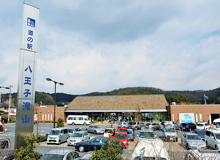
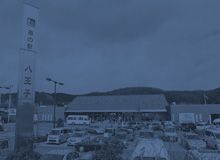
It's about 5 minutes drive from the Hachioji IC. There are always crowded and popular by the people who seek for the direct sales shop 'Farm Takiyama' selling the fresh farm products produced by the local farm houses, or for aiming at the food court where people come together for the curry and noodles using the local vegetables and Hachioji Ramen, and ,what's more, there is a souvenir shop that presents to sell all the Hachioji-brand Japanese sweets.
Michino-Eki Hachioji-Takiyama is the only place in Tokyo where you'll be satisfied with both making purchases and eating. It's highly recommended for you to go drop by!
Contact:
phone: 042-696-1201
Open: 8:00〜19:00
Address: 1-592-2, Takiyamacho, Hachiji City, Tokyo
How-to get there: 10 minutes' drive from the JR Hachioji Station
Parking lot: 5 heavy traffics, 55 standard-sized cars (there is the second parking lot available.)
-
Konica Minolta Science Dome


Feel and enjoy the science world.
Visiting this place makes people want to fly out in the space. The planetarium show various programs which give a realistic sensation. Children can feel the science through events like the science shows and the craft lessons held monthly.
☎ 042-624-3311
Opening Hours: 9:00〜17:00 (Open from 10:00 on Saturday, Sunday and the national holidays. 9;00 to 12:00 on weekdays are for groups)
Holidays: Monday (If a national holiday falls on Monday, then the following day will be closed.)
Admission: 200 yen for adults, 100 yen for children (The additional fee for planetarium: 500 yen for adults, 150 yen for children)
Address: 9-13 Oyoko-cho
Access: Nishi Tokyo bus, Hidari-01, Hidari-03 or I-11 from JR Hachioji station. 8-minute ride and get off at the Science Dome. 2-minute walk from the bus stop.
Parking Lot: 80 vehicles. -
Hino Auto Plaza
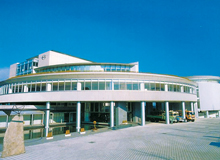

Exhibit the history of truck and bus.
The technical exhibition hall introduces the history of Hino Motors through photos and panels. The exhibition is spectacular with the model first challenged Paris-Dakar Rally and good old bonnet trucks. The best collection on bus and truck.
☎ 042-637-6600
Opening Hours: 10:00〜16:00 (No entrance after 15:00.)
Holidays: Saturday, Sunday, Year-end holidays (please contact the museum for details)
Admission: Free
Address: 5-28-5 Minamino
Access: 20-minute walk from JR Hachioji Minamino station.
Parking Lot: 14 vehicles. -
Shinzo Maeda Gallery
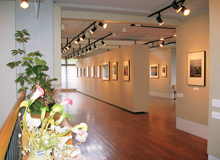
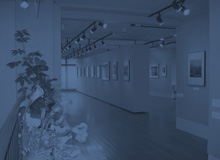
Exhibit beautiful photos of scenery.
A photographer Shinzo Maeda is famous for its taking scenery pictures of Biei or Furano of Hokkaido and from Shimo-Ongata. The gallery exhibit his photos of beautiful scenery of Biei or Furano as well as pictures of his hometown Hachioji.
☎ 042-652-3072
Opening Hours: 9:00〜16:30 (closed at 16:00 from November to March)
No scheduled holidays.
Admission: 200 yen for adults, 100 yen for junior high school students, free for children under 4 years old.
Address: 2030 Kami-Ongata-machi
Access: Bus bound for Jimba Kougen Plateau from the north exit of JR and Keio Takao station. 30-minute ride and get off at Yuyake Koyake.
Parking Lot: 200 vehicles. -
Hachioji Yume Art Museum
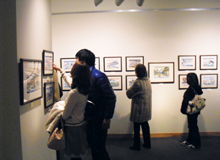

Citizens of Hachioji can visit casually.
The concept is "the artwork in daily life" and people can feel the artwork related to own daily life. Hold about six special exhibitions and regular exhibitions of museum's collection. Also has cafe and shops. Feel free to visit.
☎ 042-621-6777
Opening Hours: 10:00-19:00
Holidays: Monday (If a national holiday falls on Monday, then the following day will be closed.), Closed during the change of exhibitions.
Admission: Depending on exhibitions.
Address: View Tower Hachioji 2F, 8-1 Yokamachi
Access: 15-minute walk from JR Hachioji station.
Parking Lot: Yokamachi Yume Kaido Parking (with discount) -
Murauchi Art Museum


A museum with furniture and artworks.
The first collaborated museum of furniture and artworks in Japan. Cozy chairs and furniture by world renowned furniture designers and motivated and spectacular artworks of painters from France and Japan. It's a unique and fun museum that furniture can only create.
☎ 042-691-6301
Opening hours: 10:30-17:30 (No entrance allowed after 17:00.)
Holidays: Wednesday (If a national holiday falls on Monday, then the following day will be closed.)
Admission: 500 yen for adults, 300 yen for high school and university students, 200 yen for elementary and junior high school students.
Address: 787 Sanyu-machi
Access: Free shuttle bus runs from the north exit of JR Hachioji station. 15-minute ride.
Parking Lot: 300 vehicles. -
Tokyo Fuji Art Museum


The collection of almost 30,000 artworks.
About 30,000 collections include paintings, block prints and photos from various countries and periods are exhibited. Especially have the best collections of oil paintings and photos. A various special exhibitions or exhibitions of own collections are held such as the cultural exchange exhibitions to introduce renowned artworks from overseas.
☎ 042-691-4511
Opening Hours: 10:00-17:00
Holidays: Monday (If a national holiday falls on Monday, then the following day will be closed.), Closed during the change of exhibitions.
Admission: Depending on exhibitions.
Address: 492-1 Yanomachi
Access: 20-minute bus ride, Get off at the main gate of Souka University and Tokyo Fuji Art Museum
Parking Lot: 90 vehicles. -
Isonuma Farm


Almost 100 cows are raised in Isonuma Farm. Cows raised in less stressed environment provide delicious milk. The low-temperature pasteurized milk is made with the one milked in the morning. The additive-free yogurt is just perfect for the souvenirs.
☎ 042-637-6086
Opening Hours: 9:00-17:00
No scheduled holidays.
Admission: Free (the additional charges for activities.)
Address: 1625 Kobiki-machi
Access: Keio bus from JR Hachioji station bound for Keio Mejirodai. 10-minute ride and get off at Naka Kobiki.
Parking Lot: 5 vehicles. -
Takao no Mori, Wakuwaku village
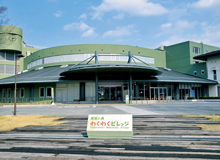
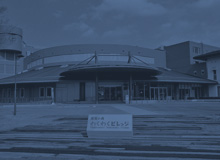
Various programs are available such as outdoor activities, cooking, art and crafts lessons. On holidays and summer holidays, all kinds of seasonal events are held. Enjoy these activities in nature.
☎ 042-652-0911
Opening Hours: 8:30~22:00
No scheduled holidays (May be closed on occasional facility checkup.)
Admission: Free (The additional fee for each program)
Address: 55 Kawa-machi -
Takao Shinrin Fureai Suisin Center

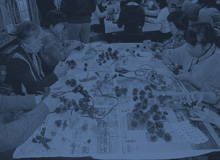
The exhibition of nature of governmental owned forests in Mt. Takao, forests and forestry industry is held regularly. The craft lessons are very popular. Let's stop by before climbing Mt. Takao.
☎ 042-663-6689
Opening Hours: 9:30-15:30
Holiday: Wednesday,Sunday
Admission: Free
Address: 2438-1 Takao-machi
Access: 5-minute walk from Takaosanguchi station
Parking Lot: Not available. -
Minamino Shizen Jyuku


Feel nature through experiencing the rice planting at Tochiyato Koen Park, restoration of village forest at Udu and observation of fireflies at Utsunuki-ryokuchi. Just apply through the website by event. (children under elementary school students must be accompanied by parents.) Join the event.
HP http://shizenjuku.web.fc2.com/
Annual Fee: 1,200 yen for adults, 600 yen for children
Tochiyato Koen Park
Address: 5-29 Minamino
Access: 20-minute walk from JR Hachioji Minamino station
Parking Lots: 5 vehicles.
Utsunuki-ryokuchi
Address: 1-125 Nanakuni
Access: 2o-minute walk from JR Hachioji Minamino station
Parking Lots: 10 vehicles. -
Yuyake Koyake Fureai no Sato

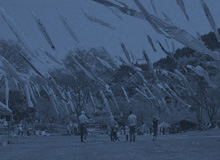
Wide area of space is surrounded by nature and feel the air. Various activities are available such as playing with small animals at Fureai Farm, playing in river and fishing. The public bath and restaurant available. Family can enjoy throughout a day.
☎ 042-652-3072
Opening Hours: 9:00-16:30 (closed at 16:00 from November to March)
No scheduled holidays.
Admission: 200 yen for adults, 100 yen for children (the additional fee may be charged depending on facilities)
Address: 2030 Kami-Ongata
Access: Bus bound for Jimba Kougen Plateau from the north exit of JR and Keio Takao station. 30-minute ride and get off at Yuyake Koyake bus stop.
Parking Lot: 200 vehicles -
Hachioji synthesis wholesale market


Why not go shopping to the market famous for its freshness?
Here, you can go shopping around for fresh vegetables, meat, marine products, daily food, and general merchandise, where the shops deal with daily food, of course, daily goods, and clothing in abundance. These goods are fresh and in high quality as a characteristic of the market, which you go shop for as your target.
Within the area of the market, as you know alike Tsukiji Market, there are dining facilities.
Contact:
phone: 042-645-6300
Opening: 6:00-12:00
Closing: Sunday, National Holidays, No scheduled holidays on Wednesday
Place: 584-21 Kitanocho, Hachiojishi, Tokyo
How to get there: 10 minutes' walk from the Kitano Station of Keio Line
Parking lots: 100 capacities -
Mitsui OUTLET PARK Tama-Minaiohsawa:
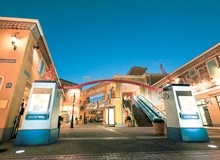
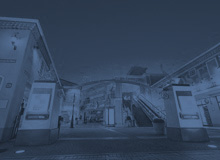
This is an easy access outlet mall, where you can buy at wide range of cross-genre shops such things as fashion, accessories, household goods, and outlet goods. They deal with goods specified for men and kids at this outlet mall shops so that even couple and families can have a fun time here. So enhanced are the restaurants and cafes that you can take your time enjoying shopping all day. Don't miss to check it out, the shops only during limited period!
Contact:
phone: 042-670-5777
Opening Hours: Shop: 10:00-20:00, Restaurants: 11:00-22:00
Closed: Contact us
Place: 1-600, Minamiosawa, Hachioji City, Tokyo
How-to get there: 2 minutes' walk from the Minamiosawa Station of Keio Line
Parking lot: about 1400 capacities
Eat
-
Souvenir & Restaurants

 Souvenir & Restaurants
Souvenir & Restaurants-
Tsutaya
Phone : 042-661-2427
-
Sakaejaya honten
Phone : 042-661-0350
-
Iijimaya
Phone : 042-661-5960
-
Hashizumetei
Phone : 042-661-8420
-
Biwaya
Phone : 042-661-0053
-
Takahashiya
Phone : 042-661-0010
-
FumotoyA
Phone : 042-667-7568
-
Kitchen Musasabi
Phone : 042-665-9943
-
Gongenjaya
Phone : 042-661-2361
-
Mineoshouten
Phone : 042-661-9045
-
Kanmi Yukido
Phone : 042-665-9905
-
Momijiya honten
Phone : 042-661-2012
-
Takamatsuya
Phone : 042-661-2014
-
Nikkoya
Phone : 042-663-9008
-
Sumika
Phone : 042-661-4151
-
Juitchomejaya
Phone : 042-661-3025
-
Shikinosakura
Phone : 042-663-6808
-
Momijiya
Phone : 042-661-2360
-
Yamabikojaya
Phone : 042-661-3881
-
Omiharashitei
Phone : 042-661-3880
-
Akebonotei
Phone : 042-663-1386
-
Hosodaya
Phone : 042-661-5999
-
Torikikushouten
Phone : 042-661-2658
-
Kinseiya
Phone : 042-661-6137
-
Tsuboman
Phone : 042-661-8422
-
Teyakisenbei Kushida
Phone : 042-667-5313
-
Chiyonoya
Phone : 042-661-4118
-
Yukido honten koujyouten
Phone : 042-665-2151
-
Kaede
Phone : 042-665-7818
-
Komiyashouten
Phone : 042-661-0372
-
Takimiya
Phone : 042-661-0229
-
Komiyashouten
Phone : 042-661-5368
-
Takahashi
Phone : 042-661-6137
-
Suehirotei
Phone : 042-661-2654
-
Shimadashouten
Phone : 042-661-7861
-
Yukido honten
Phone : 042-661-0048
-
Tsutaya
-
Ramen
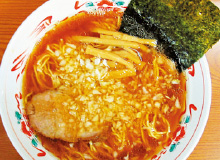
 Ramen
RamenHachioji is one of the well-known battleground states in Tokyo. What has a strong established presence among ramens in Tokyo is Hachioji Ramen, which was born about 50 years ago, and now that is so-called "Soul Food" popular and widely-supported by wide range of ages and irrespective of age or sex. There are many Hachioji ramen shops which serve ones with new style and great individuality, however, based on the basic Hachioji ramen and had been developed by trial and error.
These are the one with such tastes as umami (the fifth taste sensation) of shredded onions, very hot soup with the rendering lard covering the top, seemingly richer soup but plain and tasty soy-sauce based soup, and so on. Once you taste it, you can't forget how good it tastes. Why not go out around for Hachioji ramen shops?-
Gomadokoro Gongen Chaya
2177-2 Takaomachi / weekdays 11:00~16:00 weekends 11:00~16:30 (15:30 in feb) /
-
Binbin Nishi-Hachioji branch
2-1-1 Sennin-cho / 11:00~2:00 /
-
Ramen Ichi
1-7-6 Koyasumachi / 11:00~19:00 /
-
Mendokoro Azuki
14-10 Honmachi / tue~sun11:00~15:00 sat・sun17:00~20:00 /
-
Menkuitei
1-5-13 Akatsukicho / 11:30~20:00 /
-
Minmin
437-1 Naraharamachi / 11:00~16:00 17:00~20:00 /
-
Hoshinoya
1-5-12 Nakanokamimachi / tue~sat 11:00~18:00 sun 11:00~19:00 /
-
Binbin
1-8-17 Koyasumachi / 11:00~24:00 /
-
Hirotomi
3-11 Myojincho / 11:00~18:00 (as long as supplies last) /
-
Hatsufuji
4-17-4 Nakanokamicho / 11:00~19:00 /
-
Menya Ishikawa (Ishikawa PA on kudari route)
2975 Ishikawamachi / 6:00~22:00 /
-
Hachiojisiyakushoshokudou
3-24-1 Motohongoumachi / 11:00~14:00 /
-
Tomoe
5-18-13 Sandamachi / 11:00~19:30 /
-
Denden
1-37-6 Koyasumachi / 11:30~15:00(and thu・fri・sat 19:00~21:30) /
-
Tsukemen Amemiya
1-17-5 Daimachi / 11:00~15:00 17:30~21:00 /
-
Chitose
8 Minamishinmachi / 11:00~20:00 /
-
Tantan
1-30-6 Koyasumachi / 11:00~14:30 /
-
Syousyou
2-29-3 Horinouchi / 11:00~15:00 /
-
Goemon
3-3-3 Sennin-cho / mon~fri 11:00~17:00 sat 11:00~18:30 (as long as soup lasts) /
-
Ichiyouraihuku
472-1 Naraharamachi / 11:00~17:00 /
-
Ebisu-maru
2348 Katakuramachi / 11:30~16:00 /
-
Ichimen
5-13 Misaki-cho / around 22:00~3:00 /
-
Aika
2-22-3 Motoyokoyama-cho / 11:00~15:00 18:00~22:00 /
-
Gomadokoro Gongen Chaya
LITERARY CALENDAR
1
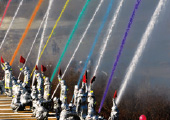
New Year's Exhibition of the fire-fighters (Dezomeshiki in Japanese)
Dezomeshiki is a fire fighting training undertaken by fire department and fire fighter personnel of Hachioji City, which is generally conducted in the early part of January as the first training for the year, such as water discharging all at once from a fire pump.
| On New Year's Day (the 1st) | Welcoming Year's First Sunrise in Mt.Takao (at the top of Mt. Takao) |
|---|---|
| Early July | First Konpira of the Year (at Koyasu-jinja Shrine) |
| on the 1st - 10th of July | Touring of Seven Fortune Gods (Eight Fortune Gods)(Hachioji Temple and others) |
| Mid July - Late March | Takaosan Fuyu (Winter) Soba Campaign' (Mt. Takao Winter Soba Festival) (around the summit of Mt. Takao) |
| Mid July | Dondo Fire Festival (Yuuyake Koyake Fureai Village) |
2

Bean-Throwing Ceremony ( Head Temple Takao-san Yakuo-in and other shrines in the city)
Setsubun ceremony is held to cast out bad fortune and to invite good fortune to bring into the home. It is said that if you eat the beans as many as the same number as your age, you will be free from illness and misfortune for that coming year, which is held with the company of sumo wrestlers, and entertainment personalities who have been prominent the previous year.
| Day of Hatsu-uma (Hatsu-uma refers to the first day of the horse in February) | Hatsu-uma (at each Inari Shrine in the city) |
|---|
3

Takaosan Fire-walking Monks (in the open area in front of the Kito-den Hall at the foot of Mount Takao)
This 'Fire Walking' is one of Japan's foremost. Holy men walk barefoot over the hot coals, praying for protection against sickness and calamity and for safety. The flames are considered to purify people by burning all defilements away. The public can also participate in.
| Mid March | Takao Baigo Japanese Plum Festival (at each Takao Baigo Japanese Plum-grove) |
|---|---|
| Mid March | Hachioji (Tokyo) All-Kanto Yume Kaido Ekiden |
4
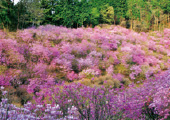
Spring Scenery of Imakuma-jinjya Shrine
1500 of Rhododendron dilatatum flowers are to bloom around mid-April alike surrounding the shrine.
| on the 1st day | Takibiraki (Yakuoin Temple, in Mt. Takao) |
|---|---|
| Early April | T108 lanterns (Mitake-jinja Shrine) |
| Early April | Cherry Blossoms Festival at Ruins of Takiyama Castle (Tokyo Metropolitan Takiyama Park: Ruins of a castle overlooking the Tama River) |
| Early April - Late May5 | Mt. Takao Young Leaves Festival (Mt. Takao piedmont and within the mountain) |
| Early April - Late May5 | Mt. Takao and Mt. Jinba Stamp Hike (from Mt. Takao to Mt. Jinba) |
| Mid April | Flower Festival (Yuuyake Koyake Fureai Village) |
| Mid April | JA Hachioji Spring Plants Fair (at open spaces within Fujimorikouen Park) |
| Late April | Verdant City with Flowers Planning Fair (Nishi-hoshasen You Road and others) |
| Late April - Early May | Yugi Flower Festival (Minamiosawa Nakago Park and around the Minamiosawa Station) |
5

Nagafusa Fureai Boys' Festival (Minamiasakawa)
About 1000 of carp streamers swim in the blue sky in a row beside the Minami-Asa-kawa River.
| Early May | Fresh Verdure Festival (Yuuyake Koyake Fureai Village ) |
|---|---|
| Mid May | Art Mucho in Hachioji (Nishi-hoshasen You Road) |
| Mid May | Hachioji Area Collaborating University Festival☆Students' Paradise (lectures free)☆(Nishi-hoshasen You Road) |
| Mid May - Late May | BIGWEST HACHISTA Festival (Hachioji City College Community Center and others) |
6

Takaosan (Mt. Takao) Beer Mount (Mt. Takao Observation Deck)
Takaosan (Mt. Takao) Beer Mount is popular with beer drinkers and couples as well as a favorite with families.
| Early June | Hachioji Environmental Festival (North Entrance of the Hachioji Station/Hachioji Mulberry Bridge/Nishi-hoshasen You Road) |
|---|---|
| Mid June | Evening of Firefly (Yuuyake Koyake Fureai Village ) |
7
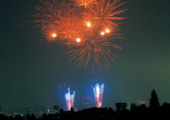
Hachioji Fireworks Display (Hachioji City Citizen's Gymnasium)
About 3500 fireworks will light up the summer night sky in Hachioji at Hachioji City Citizen's Gymnasium.
| Early July | Scenetic Market in Summer 'Moring Glory Market' (Nishi-hoshasen You Road) |
|---|---|
| Early July | Hohzuki (Chinese lantern plant) Festival (Shinsho-in Temple) |
| on July 31st and August 1st | Dango Festival (Fujimorikouen Park and Asamajinjya Shrine) |
8

Shishi-mai Dance (lion dance) of Imakuma-jinjya Shrine (at Imakuma-jinjya Shrine)
This is Intangible Folk Cultural Property (designated by Hachioji City)
The lion dance is dedicated in pray for Gokokuhojo (bumper crop), devil Exorcism, and sound health.
| Early August | Tanabata Matsuri Festival (Star Vega Festival )(Yuuyake Koyake Fureai Village ) |
|---|---|
| Early August | Hachioji Festival (Kosyu-Kaido Road and Nishi-hoshasen You Road) |
| on August 26th and 27th | Steamed Manju (Japanese cake) Festival (at Suwajinjya Shrine) |
9
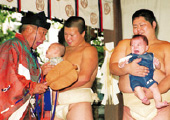
Naki-Sumo (The Baby Crying) Competition (Koyasu-jinja Shrine)
This competition is a very unique one, when parents give their babies to young students of sumo. Then, two sumo wrestlers compete to see which one will make their baby cry first. The first baby who cries is to win. It's all done in the name of good health for the children and the family.
| The first Friday and Saturday | Ginger Fest (Eifuku Inarijinjya Shrine Hachioji City) |
|---|---|
| Early September | Let's dance! Summer festival in Nishi-Hachioji (at the North entrance of the Nishi-Hachioji Station) |
| September - October (Scheduled) | Big China Market (Nishi-hoshasen You Road) |
10
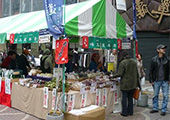
Hachioji Messe 「Street Market (Kosyu-kaido Road Market)」(Nishi-hoshasen You Road)
| Early - Mid October | Scarecrow Festival (Yuuyake Koyake Fureai Village) |
|---|---|
| Early October - Late November | Mt. Takao and Mt. Jinba Stamp Hiking (between Mt. Takao and Mt. Jinba) |
| Mid October | JA Hachioji Autumn Plants Fair (at open spaces within Fujimorikouen Park) |
| Mid October | Moto-Hachioji Hōjō Ukiteru Festival (in Motohachioujimachi) |
| Mid October | Hachioji Ojuya (an important Buddhist rite of the Pure Land Sect) (at Daizen-ji Temple) |
11

Mt. Takao Autumnal Leaves Festival (Mt. Takao piedmont and within the mountain)
Entire Mt. Takao is colored with autumn leaves. The number of the tourists/visitors hits a peak durng this autumn color season.
| Early November | Chrysanthemum flower exhibition (Yuuyake Koyake Fureai Village) |
|---|---|
| Early November | Art Mucho in Hachioji (Nishi-hoshasen You Road) |
| Early November | Yuuyake Koyake Fureai Village Festival (Yuuyake Koyake Fureai Village) |
| held at Otori Shrine on each Day of the Bird in November | Tori no Ichi open-air Market (Bird Day Fair) (held at Otori Shrine on each Day of the Bird in November) |
| On the second Saturday and Sunday of October | JA Hachioji Agriculture Festival (at Fujimorikouen Park) |
| on Saturday and Sunday around the 20th of October | Hachioji Gingko Festival (Kosyu Kaido Road) |
| Late October - Late December | Christmas Illumination (Yuuyake Koyake Fureai Village, in front of the Minamino Station and Hachioji Station) |
12
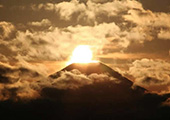
Diamond_Mt. Fuji (far from the top of Mt.Takao)
When this phenomena happens, the sun seems to be a beautiful diamond-shaped on the top of Mt. Fuji. That's why this scenery is called 'Diamond-Mt. Fuji.'
We can see this scenery everywhere and everywhen, however, the range that it's possible is the western side within 35 degrees of north or south latitude (Sunrise Diamond), and the eastern side within 35 degrees of north or south latitude (Sunset Diamond), plus good weather conditions. When all these conditions are set, only twice a year 'Diamond-Mt. Fuji' shows up for us. Thus, this is what we can seldom come across.
| on December 31st - January 3rd | Daruma-Ichi festival (Tenkaizan-Unryuji Temple, Hachioji City) |
|---|
Intangible Cultural Properties of Japan
-
Workmen's Chant While Pulling a Heavy Load (Kiyari)
 Workmen's Chant While Pulling a Heavy Load (Kiyari)
Workmen's Chant While Pulling a Heavy Load (Kiyari)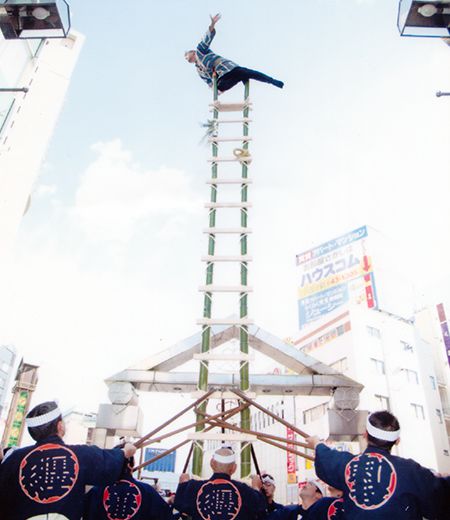
Hachioji-Kiyari is descended from Edo Kiyari and was inducted into it by a Kiyari-shi (Kiyari workman) named HONGOU Sei in 1864 (the year that Genji-Era started) in Edo.
Nowadays, Hachioji Firefighter's Memorial Association, which is the association of Scaffolders, has passed Kiyari chanting chorus down the generations, such chorus songs as Manadzuru, Teko, Bouguruma, and Togane. At Dezomeshiki (New Year's Exhibition of the fire-fighters) held every January, they exhibit their skills of Hashigo-nori (performing at the top of the aerial ladder or ladder-top stunts) and Kiyari chanting chorus. They also join the parade in April when Mt. Takao Annual Spring Festivals held. -
The Lion Head Dance of Yotsuya (Dragon Head Dance, ryuuzu mai)
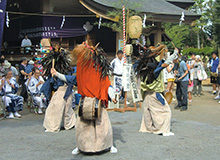 The Lion Head Dance of Yotsuya (Dragon Head Dance, ryuuzu mai)
The Lion Head Dance of Yotsuya (Dragon Head Dance, ryuuzu mai)
This Lion Head Dance is dedicated when Steamed Manju (Japanese cake) Festival is held at Suwajinjya Shrine on August 26th.
The dance is performed within the precincts with 4 of bamboo grasses and Heisoku (offerings of rope, paper hung on trees in Shinto shrines) erected and Shime (rope used to cordon off consecrated areas or as a talisman against evil). Lion Head dancers consist of three young males, Lion-head shaped Oojishi (Big Lion), Mejishi (Lioness), and Chujishi (middle-sized lion) alongside 6 girls of Hanagasa (Hanagasa-odori Dance (flower-hat dance)) and jointly Tachizukai (Sword Dance) and Bouzukai (Cudgel-play). The reason the Lion Head Dance is held in August alike others is said to be for the purpose of praying for rainfall ('Ama-goi'). -
Hazama Town's Lion Head Dance
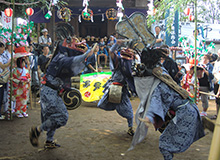 Hazama Town's Lion Head Dance
Hazama Town's Lion Head Dance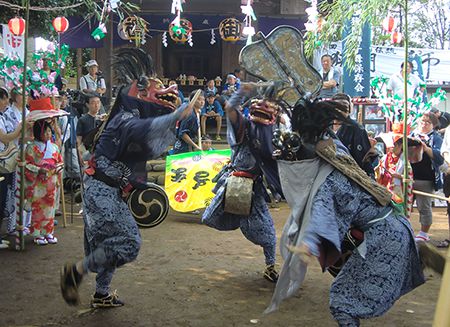
It is said that it began since Hazama Town was bestowed Shishigahsira (Lion Mask: Lion used to be believed an animal to break the evil in China, thus it's a great honor to be bestowed) by Hojyo Ukiteru who was the castellan of Hachioji castle in 1590 (the 18th year of Tensho-Era).
Lion Dance Head used to be performed at Hikawajinjya Shrine in Takaocho, however, due to the changes of administrative district in 1872 (the 5th year of Meiji-Era), the place held has been moved into Hazamacho.
When Mitakejinjya Shrine Annual Festival is held within the town on the 3rd Sunday every August, Lion Head Dance is dedicated alongwith Bojutsu (staff art) of “Tennen Rishin-ryu (a Japanese martial art, commonly known as the style practiced by several core members of the Shinsengumi).” -
Umetsubomachi Sasara (Bamboo Whisk) Lion Head Dance
 Umetsubomachi Sasara (Bamboo Whisk) Lion Head Dance
Umetsubomachi Sasara (Bamboo Whisk) Lion Head Dance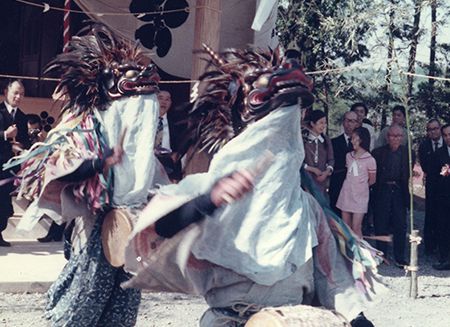
It had been dedicated to Tenjinjinjya Shrine, which is the local Shinto deity of Umetsubomachi since 1558-69 (Eiroku-Era) in the hope of the productiveness of grain and exorcizing the evil spirits.
Up to the present since World War Two, the Sasara Lion Head Dance dedicated for Rakkei Ceremony (the celebration of the completion of a temple) in 1969 (the 44th year of Showa-Era) was the last performance ever since.
3 out of 6 Lion Head Masks are said to be created during mid Edo-Era. -
Otsu Lion Head Dance
 Otsu Lion Head Dance
Otsu Lion Head Dance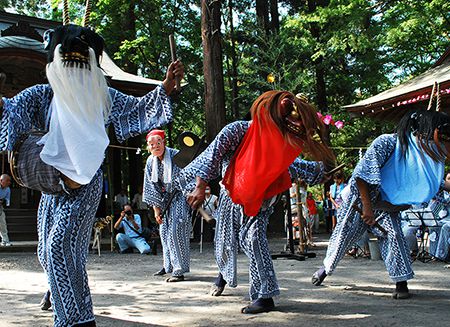
It is said that it began about 400 years ago to dedicate to Kumanojinjya Shrine praying for abundant crop, harvest, and rainfall.
Three of Male Lion Head, Golden Lion Head, and Female Lion Head are a bit longer than usual shaped ones, which is the reason Otsu Lion Head Dance is called 'multitiered-box-like Lion Head' by local people. Its characteristics are extremely slower-moving in its phrase of a dancing song and the way Lion Head Dancers moves compared to other ones.
Currently the dance is dedicated on the 2nd Sunday every August. They say what they're going to pray for is up to them every year. -
Yamairi Lion Head Dance
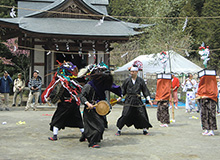 Yamairi Lion Head Dance
Yamairi Lion Head Dance
Also called as Miyama Lion Head Dance. Unfortunately, the historical records were burned down by war fire damages in 1945 (the 20th year of Showa-Era),however, it is said to have begun in the middle period of Edo-Era. It presents the typical 'Spring Lion Head Dance' by dedicating the dance to Hiejinjya Shrine and to Konpirajinjya Shrine in April every other year in the hope of the productiveness of grain and exorcizing the evil spirits.
Yamairi Lion Head Dance consists of 2 male Lion Head, 1 female Lion Head with girls of Hanagasa (Hanagasa-odori Dance (flower-hat dance)) wearing a square 'multitiered-box-like hat' on the head while scuffing Sasara (Bamboo Whisk). -
Imakumajinjya Shrine Lion Head Dance
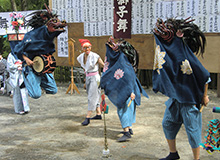 Imakumajinjya Shrine Lion Head Dance
Imakumajinjya Shrine Lion Head Dance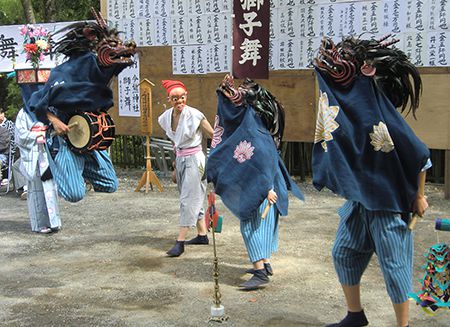
According to the orally transmitted legends, how this dance began is a Buddhist monk named June, Betto (Chief Administrator of the institution serving also as the head of another, especially religious one) of Shofukuji Temple purchased 3 Lion Head masks in 1364 (the 3rd year of Jyoji-Era), and then taught village folks how to dance as an entertainment. It is said that it was at the peak during 1844 to 1853 (Kouka-Era and Kaei-Era), and that Daikan (local governor) named EDOGAWA Tarouzaemon paid his respects for a special exposition at Imakumajinjya Shrine in 1845 (the 2nd year of Kouka-Era) to enjoy watching Imakumajinjya Shrine Lion Head Dance. This dance is dedicated to the shrine when the traditional ritual festival is held at Imakumajinjya Shrine on the 4th Saturday and Sunday every August. 3 Lion Head performers dance wearing the same feathers with drums on the waist, while girls of Hanagasa (Hanagasa-odori Dance (flower-hat dance)) wearing a heavy 'multitiered-box-like hat' on the head dance scuffing Sasara (Bamboo Whisk).
-
Tamorijinjya Shrine Lion Head Dance
 Tamorijinjya Shrine Lion Head Dance
Tamorijinjya Shrine Lion Head Dance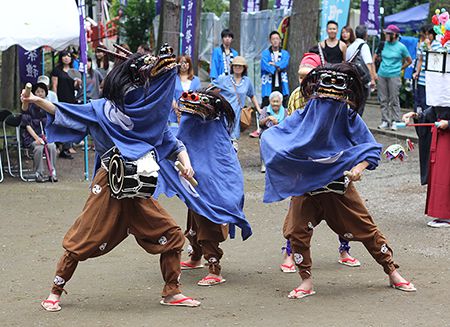
According to the orally transmitted legends, it began during 1804 to 1817 (Bunka-Era) and there still remain the historical records telling the dance was dedicated in 1849 (Kaei-Era). As being renowned for its ability to fulfill the wishes for rainfall from the ancient times, it's also called as 'Rain‐making Lion Head Dance.' It also prays for abundant crop and harvest.
The style how it's performed consists of 2 male Lion Head and 1 female Lion Head.
The dance plots are composed with Shoteniwa (First dance), Nakaniwa (Second dance), and Atoniwa Last dance usually performed by adults). Each of them has 2 or three songs played alongwith. Hanagasa (Hanagasa-odori Dance (flower-hat dance)) is a 'multitiered-box-like hat' shape. Nowadays held on the 4th Sunday every August, however, they say there used to be held in spring. -
Hikawajinjya Shrine Lion Head Dance
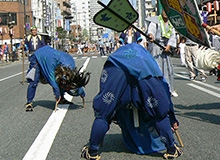 Hikawajinjya Shrine Lion Head Dance
Hikawajinjya Shrine Lion Head Dance
Lion Dance Head used to be dedicated for Hikawajinjya Shrine in Hazamacho, however, due to the changes of administrative district in 1872 (the 5th year of Meiji-Era), Hazamacho held has been moved into Kunugidamachi. Consequently, due to the change, people living in Hazamacho began instruction in an art or technique of the dance to those who live in Kunugidamachi, where Hikawajinjya Shrine is located. Ever since, those who dwell in Kunugidamachi have come to dedicate the Lion Head Dance.
3 Lion Head perform heroically and elegantly to music played on Japanese flutes praying for the hope of the productiveness of grain and exorcizing the evil spirits while beating large drums on the traditional ritual festival, the 3rd Sunday every August. Music played on Japanese flutes, BAMBOO FLUTE, are changed with accordance to the where they're. When they're marching into the shrine, the BAMBOO FLUTE music is 'Toorihue' (Passing inward flute), then 'Jyuha' played when passing ' through Torii (the Shinto gateway) , and finally changed to (Music melody of Okazaki) played when the dance is about to start. Hikawajinjya Shrine Lion Head Dance is characterized in the story of hiding a female lioness. -
Ishikawa Town Lion Head Dance:
 Ishikawa Town Lion Head Dance:
Ishikawa Town Lion Head Dance:
How it began was that 'Ryuuzu' dance was dedicated in 1573 (the 1st year of Tensho-Era) at Subsidiary Shrines within the Main Precinct of Sairenji Temple to celebrate the completion of Mitakegongen (avatar of Mitake). Ever since that till today, it has been handed down over generations. Now that so far, the oldest existing 'Ryuuzu' dance is the one of the middle of Edo-Era. It's dedicated for Mitakejinjya Shrine at the traditional ritual festival held on the 3rd Saturday and Sunday every September. The style of Lion Head mask belongs to the one of 'Ryuuzu' dance with 2 male Lion Head, 1 Lion Head. Male one wears 'Kenkaku' (Sword Horn) and Female one wears 'Hoju' (literally, a precious orb) on them with being decorated feathers. Dance resembles the one of Umetsubomachi Sasara (Bamboo Whisk) Lion Head Dance so much, therefore, people in old days had the practice of calling 'Umetsubomachi Sasara' for spring and 'Ishikawa' for autumn.
-
Hachioji Kuruma Ningyo (a late Edo period off-shoot of the traditional Japanese puppetry of Bunraku, a form of puppet theatre created by the first Koryu Nishikawa around the end of the Edo period (late 19th century)).
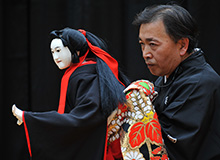 Hachioji Kuruma Ningyo (a late Edo period off-shoot of the traditional Japanese puppetry of Bunraku, a form of puppet theatre created by the first Koryu Nishikawa around the end of the Edo period (late 19th century)).
Hachioji Kuruma Ningyo (a late Edo period off-shoot of the traditional Japanese puppetry of Bunraku, a form of puppet theatre created by the first Koryu Nishikawa around the end of the Edo period (late 19th century)).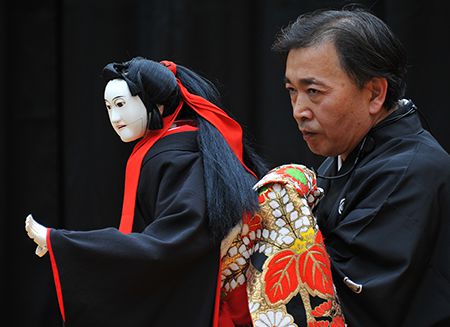
Place: 1566 Shimoongatamachi, Hachioji City, Tokyo (Nishikawa-Koryuuza, a performing theater)
Intangible folk cultural properties that ought to be preserved in the form of written records or documents:
Hachioji Kuruma Ningyo originated in the western Tokyo town of Hachioji, by a master puppeteer born late in Edo-Era, 1825, Nishikawa Koryu (YAMAZAKI Ryukichi). The Kuruma Ningyo puppeteer operates one doll all by him- or herself. They do so by sitting on wooden boxes with three wheels, one large and two small (so-called 'Rokurosya'), and by shifting their weight slightly from one front wheel to another they can be surprisingly fluid in their movements with their right hand operating both hands of the doll, left hand operating the left hand and the neck of the doll, and furthermore thumb finger eyes, mouth and eyebrows. Dolls show performances directly on their own on the stage, which consequently results in generating a unique uplifting feeling. It is said that there is no other like this in the world, such structures as Hachioji Kuruma Ningyo. It spread mainly in the Tama regions (western district of Tokyo) from the end of Edo-Era through Meiji-Era, nor is this all, also spread in whole district of Kanto. It was introduced through the good offices of HIRA Otojirou (textile manufacture) around the end of Taisho-Era to MITAMURA Engyo, TSUBOUCHI Shouyou (1859.6.22-1935.2.28), ODAUCHI Michitoshi (1875 - 1954), and others, who further introduced Hachioji Kuruma Ningyo to Central theatrical world. Thus, gradually Hachioji Kuruma Ningyo's artistry had got recognized so that people used to admire by saying 'Bunraku in the west, Kuruma Ningyo in the east,' however as time went on, gradual decay could not be helped. Here, in Hachioji City, only Nishikawa-Koryuuza in Ongata has been left as the last stage that we can watch Kuruma Ningyo. Currently Nishikawa-Koryuuza has made widely various efforts such as assimilating 'Gidayuu' ballad drama (narrative accompanied by a Shamisen used in the Bunraku puppet theater, written by Takemoto Gidayuu in 17C Japan), drawn from the tradition of Joruri songs, regardless the style of traditional 'Sekkyoubushi' being handed down orally by local people, which, as a result, succeeded in saving the declining Kuruma Ningyo in danger. Furthermore, they have been working on a worldwide level by giving a lecture and so on. -
'Sekkyo Joruri' (a Japanese narrative of a Buddhist scripture, called “Joruri” ballad drama):
 'Sekkyo Joruri' (a Japanese narrative of a Buddhist scripture, called “Joruri” ballad drama):
'Sekkyo Joruri' (a Japanese narrative of a Buddhist scripture, called “Joruri” ballad drama):
'Sekkyo' (preaching a sermon) or 'Sekkyo Bushi' (Bushi means tune) used to be originally one of the methods to promote Buddhism, however, it was not long before becoming performing arts, and then during Edo-Era it began in tandem to run a play, which gave an influence over 'Joruri.' As a result of it, some music of Joruri adopt the tunes of 'Sekkyo Bushi', which are called 'Sekkyo Joruri.' But here, the point is that the 'Sekkyo Bushi' and 'Joruri' fundamentally differ from each other. As the content plots of 'Sekkyo Bushi' was limited to Reigen-mono (literally “tale of miraculous efficacy”), it got gradually overwhelmed into obsolescence, while on the contrary 'Joruri' adopted a new line or originality one after another.
'Sekkyo Bushi' saw a resurgence in 1789〜1801 (Kansei-Era), when the Sekkyo called 'Sekkyo salmon,' the combination of Sekkyo and salmon (a written paean to the gods), also began calling itself the Satsuma school. This is how Hachioji Kuruma Ningyo as well as 'Sekkyo Bushi' in the Satsuma school was begun. 'Sekkyo Bushi' spread throughout the Tama district (western region of Tokyo area) around the time of last days of the Tokugawa Shogunate (Edo-Era) and settled there. 'Sekkyo Bushi' of Hachioji became the most prosperous during Taisho-Era and the early Showa-Era, but declined later after that period. Currently, 'Sekkyo Bushi Association' founded in 1986 (the 61st year of Showa-Era) work to promote in resurging and handing down onto the next generation.
